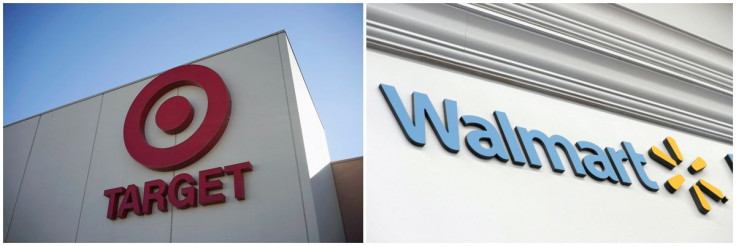Holiday Season Arrives Early For Walmart, But Not For Target
The Holiday season arrived early for Walmart this year but not for Target, as evidenced by the recent financial results of the two companies.
On Tuesday, Walmart reported financial results for the third quarter that beat analyst estimates. Sales came at $152.8 billion, up 8.7% year-over-year, thanks to strengths in Walmart U.S., Sam's Club U.S., Flipkart, and Walmex. Moreover, U.S. sales rose 8.2%, while online sales surged 16%.
These figures are very close to the company's performance a year ago when it reported a 9.2% gain in comp sales and an 8% growth in online sales.
"Walmart's reach is so consistent that it can go overlooked," said Ethan Chernofsky, VP of Marketing at Placer.ai, in an email to International Business Times. "While the retailer has been well positioned with key trends like the push to value and mission-driven shopping, their continued dominance in an increasingly competitive discount retail environment is noteworthy."
On Wednesday, Target reported financial results that missed analyst estimates. In addition, sales came at $26.5 billion, up 3.4% from last year, while comparable sales rose by 2.7%, and digital sales grew by 0.3%.
These results are sharply different from a year ago when sales rose 12.7% in Q3 comparable sales gain, and overall sales climbed 9.7%, while online sales grew 29%.
"Target is continuing to face headwinds as a combination of a difficult comp numbers from peak COVID period last year, and a challenging economic environment for consumers have them on their heels," Hilding Anderson, Head of Retail Strategy, North America at digital consultancy Publicis Sapient, said in an email to IBT.
The mixed performance of the two retailers comes at a time consumer spending remains solid. October U.S. retail sales rose 1.3% from the previous month, the best increase in eight months, and ahead of market forecasts of a 1% gain.
The solid retail sales suggest that the weak performance of Target is an individual rather than an industry problem, like the failure to effectively address the shift in consumer spending patterns in the face of rising inflation and interest rates.
"Generally, Target saw a shift from more profitable luxury items towards essentials and discounted items, suggesting consumer pressures," said Anderson. "The combination of peaking inflation and higher interest rates raising borrowing costs seem to have a slowing effect that is starting to bite discretionary spending."
Anderson sees this trend continuing in the near future. "This quarter confirms that the middle-class consumer has been hit hard by inflation and is changing the way they spend by trading down. They are buying more value-priced goods and shifting to white-label products. It suggests continued headwinds for the non-value players in big box retail during this holiday season."

© Copyright IBTimes 2025. All rights reserved.






















